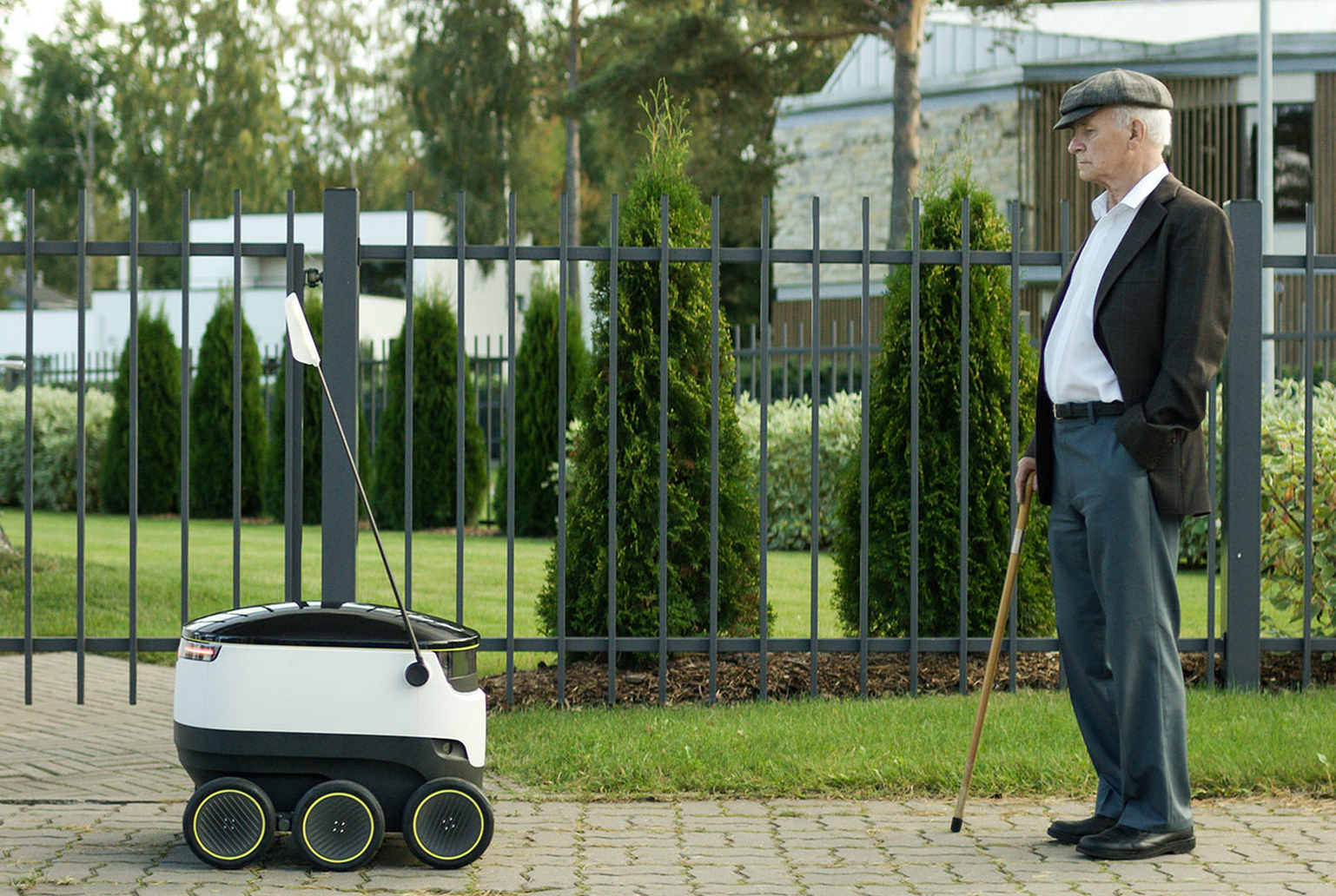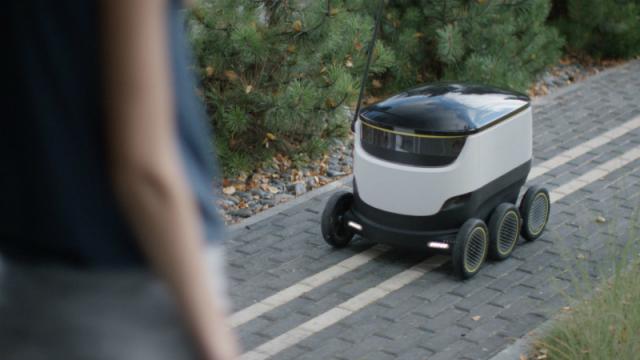Remember what happened to hitchBOT this summer? You know, the hitchhiking humanoid that was ripped limb from limb two weeks into its solo journey? Because two of the original founders of Skype want to make robots that will similarly traverse streets, in order to ship goods to your house. It could be a great alternative to delivery drones… assuming the ‘bots make it to your doorstep in one piece.
Today, the new company Starships Technologies announced its plans to bring six-wheeled, self-driving delivery robots to the world. Two of Skype’s original cofounders, Estonians Ahti Heinla and Janus Friis, helped launch this new venture.
The ground robots themselves would be small, emission-free, and each would carry 18kg, or the approximate equivalent of two grocery bags. Customers can pick exact time slots to expect the deliveries, which the company says can take anywhere from five to 30 minutes from nearby shops. The robot, which is equipped with nine cameras and would travel on footpaths alongside pedestrians at 6km/h, can be tracked by customers real-time on a mobile app. And when the robot arrives, only the customer can unlock the delivery from the robot.

Starship says that the bulk of normal delivery costs come from that last kilometre or so, and that’s where the delivery robots could lead to cost savings. Again, as always, robots could be used to replace humans in tasks that (a) humans don’t want to do, (b) would be cheaper if a robot did it, and (c) the robot does the task better than a human could. Could these robots check all those boxes? It’s unsure at this time.
But this could be a great alternative to delivery drones. The legal regulation, privacy concerns, and safety issues swirling around unmanned aerial vehicles are all complex and seemingly never-ending as governments around the world grapple with how to integrate drones into our lives. Right now, everyone from Amazon to Google and even Walmart are pursuing delivery drone technology.
But ground delivery robots might be better received, from a legal and privacy standpoint. The real question is, could such a robot actually be seamlessly integrated into our neighbourhoods and streets? Would it run into utility poles, or would a group of teen rapscallions make scrap metal out of it? (The BBC reports that each Internet-connected robot would be outfitted with a speaker and cameras, and that a human operator at headquarters can alert authorities if the robot’s attacked.)
Plus, assistive transport robots aren’t really anything new: Tokyo’s Haneda International Airport, which is rolling out helpful robotic staff among the human employees, sports a ‘bot that carries a staggering 181kg worth of luggage for consumers. But Starship’s taking it one step further with actual home delivery.
As for Starship Technologies, it shouldn’t come as much surprise that this new technology is being developed in Estonia. Megan Smith, CTO of the United States, told Gizmodo previously that Estonia is a tech-forward nation that the rest of the world can learn from. A robust robotics scene is just one of Estonia’s “e-society” initiative. It’s a country that’s incredibly focused on emerging tech and online infrastructure: citizens can vote, pay taxes, and get prescriptions instantly through a single site.
However, part of the fun (and constant challenge) with emerging technologies is figuring out how people will respond to them. Assuming humans don’t treat delivery robots as something to be kicked or keyed — and assuming these autonomous machines can actually safely get your purchases to your door — they could be a viable alternative to drones for shipping you groceries and packages.
The company says it’s testing its prototypes now, with plans to launch a pilot program in the US, UK, and in other countries next year.
[Starship Technologies via The Verge and the BBC]
Images via Starship Technologies.
